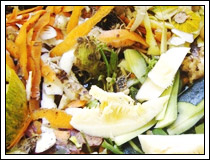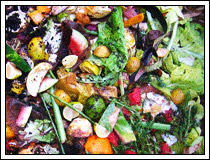Organic Waste
Municipal solid waste derived from household, commercial, institutional and industrial establishments contain bulk volumes of organic waste. These contaminants are biodegradable, and often enter the environment with specific health hazards. Mostly, industries engaged in processing and formulation of  pesticides, pharmaceuticals, paints and dyes, petro-chemicals, detergents, plastics, etc., generate a wide variety of organic waste, which if not properly treated and reused may pose several environmental threats. pesticides, pharmaceuticals, paints and dyes, petro-chemicals, detergents, plastics, etc., generate a wide variety of organic waste, which if not properly treated and reused may pose several environmental threats.
Different Types of Organic Waste
There are many different types of organic pollutants or waste, which can be subdivided into the following broad categories:
Hydrocarbons
These hydrogen-carbon bonds can be divided into two major types- the first type includes single-bonded alkanes, double bonded alkenes and triple bonded alkynes (gases or liquids), and the second type includes aromatic hydrocarbons, which contain ring structures (liquids or solids) and are more reactive than the former.
PCBs
Waste such as hydraulic fluids, coolant/ insulation fluids in transformers and plasticizers in paints are classified under the PCB category. They are immiscible in water and are quite toxic.
Insecticides
This category of organic waste is very dangerous because it accumulates in fat tissues of lower animals, eventually entering the food chain. A common example of a potentially harmful insecticide is DDT.
Detergents
This class of organic waste generated from domestic as well as industrial settings is highly hazardous to health. They are freshwater pollutants that generally enter into surface water via sewage works.
Organic Waste Treatment

As biodegradable organic waste or contaminants usually do not require pH control of their effluent, they can be easily treated using aerobic methods like Aerated Lagoons. This water treatment method efficiently treats nontoxic wastewater generated by industries like the pulp and paper mills. However, it has to be noted that biological processes can remove only degradable organics. The non-degradable organics present in the influent water or generated as oxidation bye-products are extremely toxic and hazardous to aquatic life. The most common technology used to solve this problem is adsorption on activated carbon. Sometimes, anaerobic processes are also employed before aerobic processes for the treatment of high-strength, readily degradable wastewater as they produce low sludge and methane.
|